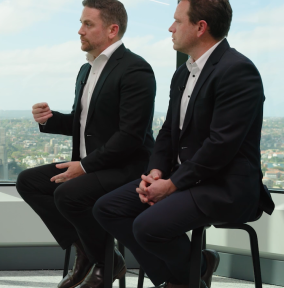Mitigating sequencing risk through active investing
We believe investors should view market volatility as a wealth-creation opportunity.
Volatilty in global equity markets and persistent high inflation reinforce a growing problem for those nearing retirement - sequencing risk.
Understanding sequencing risk and its impact on retirement
Sequencing risk refers to the order and timing of unfavourable investment returns. This risk can have a significant effect on retirement-saving outcomes and its consequences are often most pronounced around the point of retirement.
Negative returns near retirement can mean less money to live on later in life. Protecting capital is critical for those nearing retirement or just in it.
Consider an investor who retired in late 2019. The equities slump in the first quarter of 2020 due to COVID-19 reduced the value of their retirement savings. The investor had to withdraw some of their savings to live, meaning they had less capital invested to benefit from the equities rally later that year.
Simply, the investor was in the wrong place at the wrong time. The risk is their retirement savings never fully recover due to the timing of withdrawals during a market downturn.
Heightened market volatility is increasing sequencing risk. Investors nearing retirement must hope equity markets do not tumble just as they stop work and rely on their retirement savings. But hope is not an investment strategy.
Higher inflation can compound this problem in two ways. First, uncertainty over the persistence of inflation and the direction of interest rates is fuelling market volatility and increasing sequencing risk. Second, higher living costs may force some retirees to make larger withdrawals at precisely the wrong time.
Strategies to mitigate sequencing risk during market volatility
Active management can be one way to help mitigate sequencing risk. Rather than passively ride out market corrections – and expose portfolios to sequencing risk – investors can take advantage of market volatility and buy assets at lower valuations.
That requires a different mindset to volatility and risk. Rather than view market volatility as a significant threat to retirement savings, pre-retirees should view market falls as an opportunity to amplify long-term portfolio returns.
Capitalising on market volatility to buy undervalued assets can help retirees generate higher returns over time – and maintain purchasing power in retirement, amid higher inflation and living costs.
None of this is easy. As people approach retirement, the natural tendency is to take less investment risk and be financially less active. That is appropriate – to a point. Problems emerge when pre-retirees are stranded on the sidelines during market corrections, hoping the value of their portfolio will recover.
The role of active management in navigating retirement savings
Pre-retirees and recent retirees can benefit from active managers to help navigate market volatility, protect capital and seize opportunity. As sequencing risks rise, so does the need for active rather than passive funds management.
Advisers should factor growing sequencing risks into portfolio planning – and have strategies to respond to this risk, should it occur. Most of all, they should work with clients to help them understand and mitigate any sequencing risk.
For many investors, the main risk is that their retirement savings run out before they do. Sequencing risks magnify this risk, at a time when people should be enjoying their retirement rather than fearing market volatility.
For more PM Capital insights, visit www.pmcapital.com.au/insights
Disclaimer
This insight is issued by PM Capital Limited ABN 69 083 644 731 AFSL 230222 as responsible entity for the PM Capital Global Companies Fund (ARSN 092 434 618), the PM Capital Australian Companies Fund (ARSN 092 434 467) and the Enhanced Yield Fund (ARSN 099 581 558), the "Funds". It contains summary information only to provide an insight into how we make our investment decisions. This information does not constitute advice or a recommendation, and is subject to change without notice. It does not take into account the objectives, financial situation or needs of any investor. All investors should seek their own financial advice, and must not act on the basis of any matter contained in this communication in making an investment decision bust must make their own assessment of the Funds and conduct their own investigation and analysis prior to making a decision to invest. Investors should consider the Funds’ Product Disclosure Statement and the Target Market Determination which are available on the PM Capital website. See www.pmcapital .com.au for further information.
Past performance is not indicative of future performance. The objective is expressed after the deduction of fees and before taxation. The objective is not intended to be a forecast, and is only an indication of what the investment strategy aims to achieve over the medium to long term. While we aim to achieve the objective, the objective and returns may not be achieved and are not guaranteed. Certain statements in this Insight may constitute forward looking statements. Such forward looking statements involve known and unknown risks, uncertainties, assumptions and other important factors, many of which are beyond the control of the PM Capital and which may cause actual results, performance or achievements to differ materially (and adversely) from those expressed or implied by such statements.





